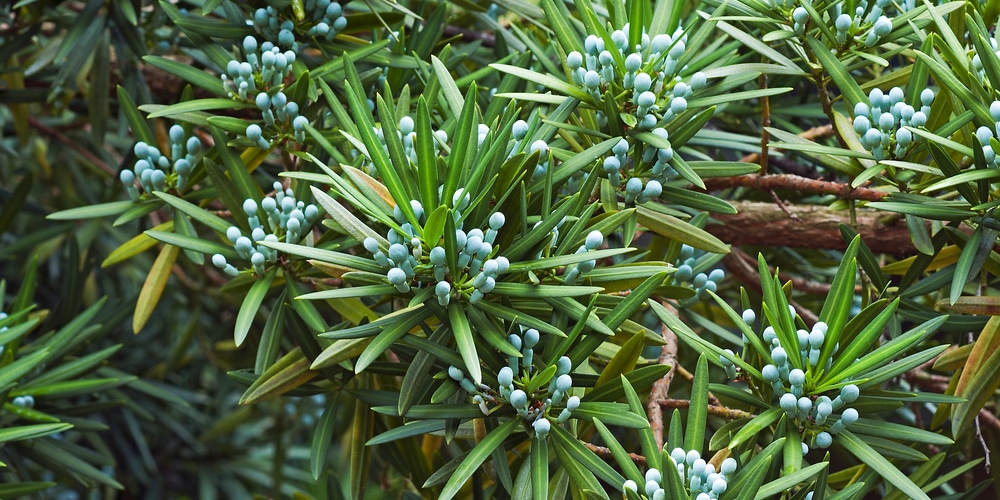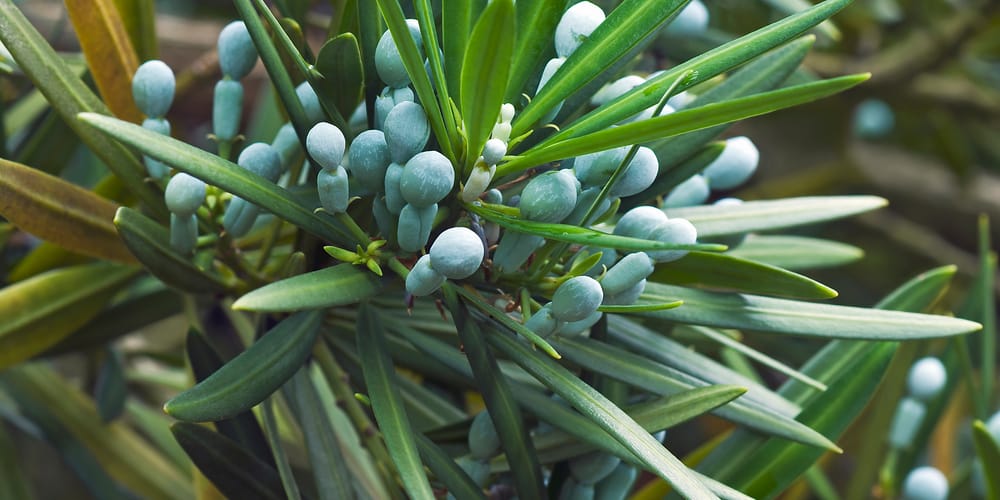Podocarpus or the Japanese Yew Pine is a versatile landscape piece you can use in your yard. The easy-to-grow shrub adapts to nearly every environment, but if you want a specimen that grows thick and wide then you may need to do a bit of extra work to reap the visual reward. Here are 5 tips on how to make podocarpus grow thicker.
How to make podocarpus grow thicker

Give Your Podocarpus a Frequent Trim
The best way to make your podocarpus thicker and branch out is by constantly trimming it. Keep in mind that trimming and pruning are two different things, especially when it comes to the Japanese Yew Pine.
Pruning a podocarpus is mostly done to shape it and remove dead leaves and branches, while trimming is done to make the shrub bushy.
The right way to trim a podocarpus to make it grow thicker is to make even cuts on all sides. You should pay attention to the top and sides, and make cuts that range anywhere from two to four inches.
For aesthetic purposes, it is recommended that you make the top foliage narrower compared to the bottom so the podocarpus assumes a pyramidal shape.
Trimming should only be done bi-weekly, or once every two weeks so your shrub can bounce right back. Too much can be detrimental to a plant’s health, and it increases the chances of disease or fungal infection.
Don’t Forget to Water and Fertilize
Podocarpus is a vigorous grower given optimal conditions. Although the shrub is considered drought tolerant to a degree, it does need regular watering to form leaves and branches.
When caring for Japanese Yew Pine you’ll want to keep the soil moist but not waterlogged. If it is planted in loose and well-draining soil, then you can probably get away with daily watering during the growing season. Young podocarpus specimens will need more watering compared to a shrub or tree that’s already established.
When watering your podocarpus you shouldn’t water overhead and get the leaves wet, or it will invite leaf mildew.
You should also feed your podocarpus to make the plant strong, healthy, and able to grow side shoots and leaves. The preferred NPK ratio for Japanese Yew Pine is a 6-6-6 formulation in the form of water-soluble or slow-release kind. If possible, you should also make the soil slightly acidic so the plant can absorb all the available nutrients.
Plant Your Podocarpus in Full Sun
Podocarpus is hardy in zones 7 to 9, which means it is more tolerant of heat than the cold. What’s surprising is that it can tolerate full shade and yards that don’t get direct sunlight. That said, you should be able to plant the Japanese Yew Pine practically anywhere you like and it will live for a long time.
However, if you’re looking to make the most of your podocarpus, then it’s recommended that you plant it where the shrub can get full sun. This way the podocarpus enjoys a faster growth rate and can fill its space quite nicely.
The evergreen conifer also likes temperatures that range from 55 to 60 degrees F and slightly acidic soil with organic matter.
Prune to Shape
Sometimes you can prune your Podocarpus shrub to make it appear thicker. When pruning, you can follow a twice-yearly process where you cut foliage and branches in the fall to make it grow better come springtime, and again in the summer to flush out a secondary growth spurt.
Podocarpus is a multi-stemmed shrub, but it can be trained to have a single trunk and a columnar tree with interesting foliage shapes.
Watch Out for Pests and Diseases
Lastly, you’ll want to keep all your Japanese Yew Pine’s branches and foliage healthy so it appears thicker. One way to maintain a healthy and bushy appearance is to watch out for pests and diseases that can attack your evergreen shrub.
Scale and aphids are two pests that can invade a podocarpus plant. Both can cause significant leaf and plant damage, but they can be easily remedied with a homemade solution of rubbing alcohol or a spray of insecticidal soap.
Podocarpus largely resists a wide variety of diseases, but you should avoid getting the roots constantly wet or it will cause fungal problems.
Related Article: Shade Plants North Texas
